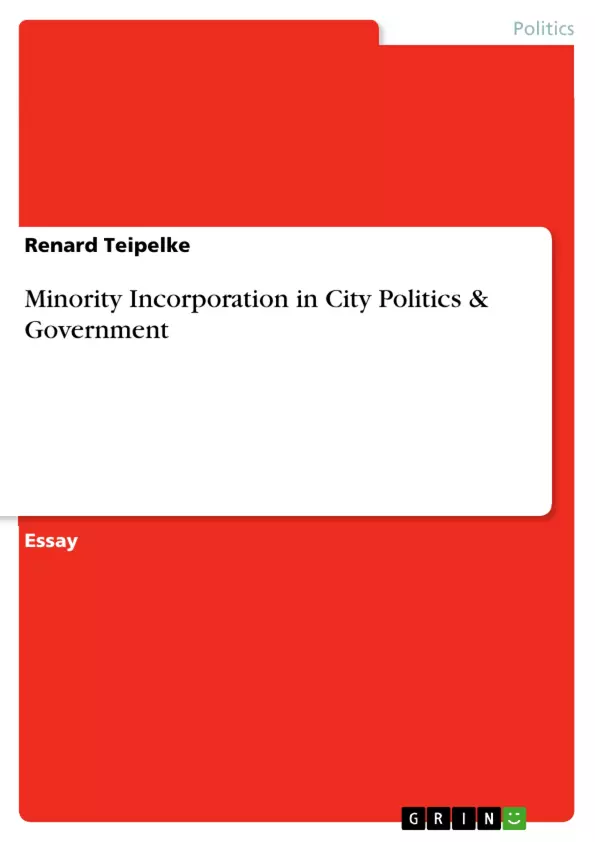In the following report I will present the main points of the minority incorporation hypothesis in Browning et al.’s book “Racial Politics in American Cities.” I will show that San Diego’s first Latino mayor can only succeed in satisfying the demands of a city transitioning toward majority-minority status if he is able to implement policies that enable minority incorporation in quantitative and qualitative terms, thereby working with an issue-oriented coalition on an agenda that balances social and economic interests. After outlining the requirements for successful minority incorporation, the expectations of representative and policy responses from the takeover of the city government by people of color will be described. Then I will explain the (dis-) advantages of multi-racial/ multi-ethnic alliances and ways to solve the possible dilemma between intra-ethnic solidarity of Latinos and interests of the inter-ethnic rainbow coalition. This is followed by a discussion on how different interests of the city’s disparate constituencies can be overcome and how a backlash among the Anglos can be avoided. At the end, the concept of the “hollow prize” mayor will be applied on this specific case.
Inhaltsverzeichnis (Table of Contents)
- Minority Incorporation in City Politics & Government
- Browning et al.'s Criteria for Minority Incorporation
- Representative and Policy Responses Expected from Minority Takeover
- Multi-racial and Multi-ethnic Coalitions: Advantages and Disadvantages
- Overcoming Diverse Interests and Avoiding Backlash
- The Latino Mayor and the "Hollow Prize"
Zielsetzung und Themenschwerpunkte (Objectives and Key Themes)
This report examines the concept of minority incorporation in city politics, specifically focusing on the case of San Diego's first Latino mayor. It analyzes how the mayor can successfully navigate the challenges of leading a city transitioning towards majority-minority status and meet the demands of diverse constituencies. The report utilizes Browning et al.'s model of minority political incorporation to assess the requirements for successful minority representation and influence within the city government.
- Minority incorporation in city politics
- The role of coalitions in minority representation
- Balancing social and economic interests
- The challenge of converting campaign rhetoric into policy
- The "hollow prize" mayor phenomenon
Zusammenfassung der Kapitel (Chapter Summaries)
- The report begins by outlining the five criteria for minority political incorporation proposed by Browning et al., which include population size, group mobilization, demand protest/electoral politics, minority appointees/electees, and government response.
- The second chapter discusses the representative and policy responses expected from the minority's takeover of city government, highlighting the need for minority groups to be included in the political process and to have their concerns addressed by city officials.
- The third chapter explores the complexities and potential drawbacks of multi-racial and multi-ethnic coalitions, emphasizing the need for shared interests and strong leadership to overcome inter-minority conflicts and ensure effective political incorporation.
- The fourth chapter focuses on the strategies the Latino mayor can employ to overcome diverse interests and avoid backlash among the Anglo population, emphasizing the importance of issue-oriented policies and a balanced approach to social and economic concerns.
Schlüsselwörter (Keywords)
This report delves into the concepts of minority political incorporation, multi-racial and multi-ethnic coalitions, representative government, policy implementation, and the "hollow prize" mayor. It examines the challenges of balancing social and economic interests, navigating diverse constituencies, and achieving meaningful minority representation in a city transitioning towards majority-minority status.
- Quote paper
- Renard Teipelke (Author), 2009, Minority Incorporation in City Politics & Government, Munich, GRIN Verlag, https://www.grin.com/document/144252



